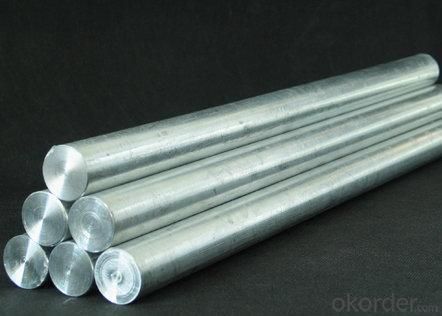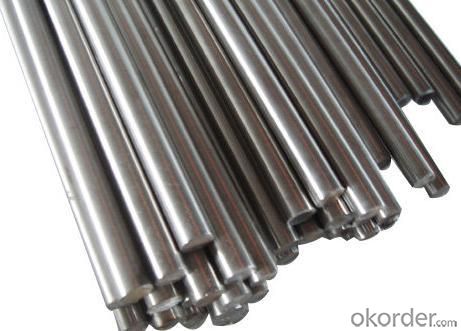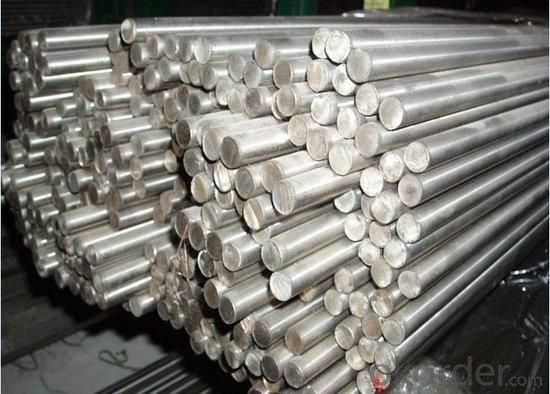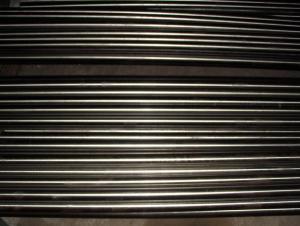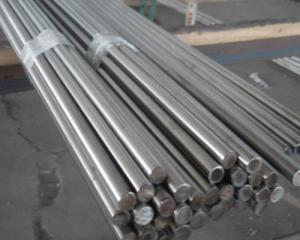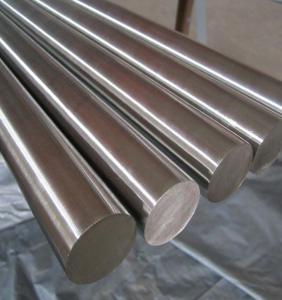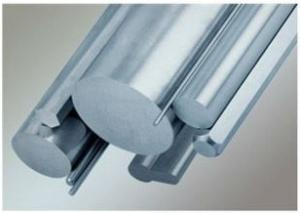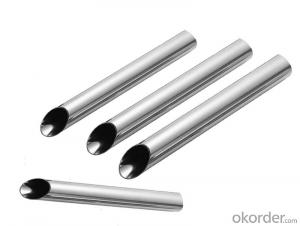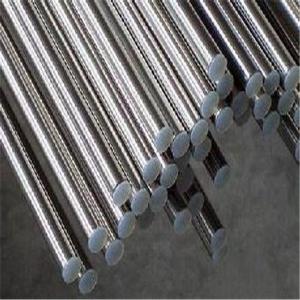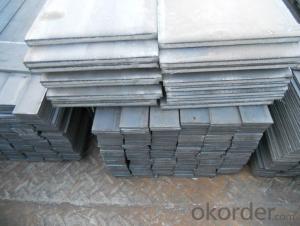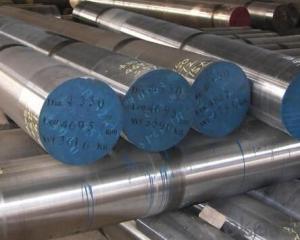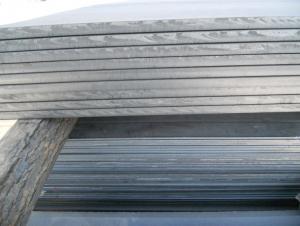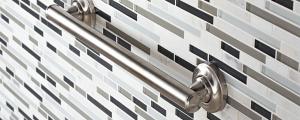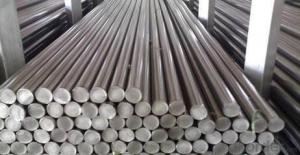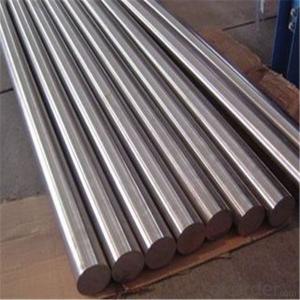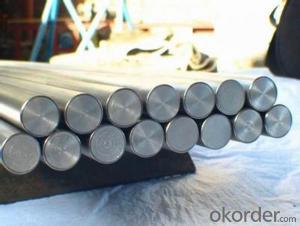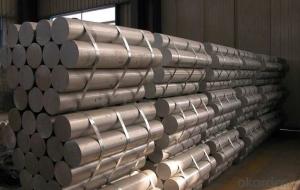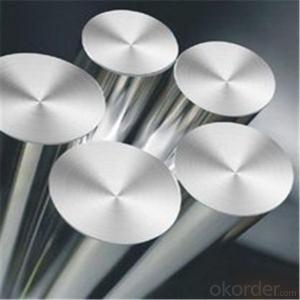Stainless Steel Bars
- Loading Port:
- Shanghai Port
- Payment Terms:
- TT or LC
- Min Order Qty:
- 10 Tons m.t.
- Supply Capability:
- 1000 Tons Per Month m.t./month
OKorder Service Pledge
OKorder Financial Service
You Might Also Like
Introduction of Stainless Steel Round Bright Bar:
Stainless steel is a production which not easy rust,acid resistance and corrosion resistance, so it is widely used in light industry, heavy industry, daily necessities and the decoration industry.my company long-term supply stainless steel porducts including: stainless steel sheet, stainless steel coil and stainless steel tube.
Details of Stainless Steel Round Bright Bar(Cold Drawing Polished):
*DIA 10mm to 130mm
*FORGE
*DIA 130mm to 300mm
*GB1220,ASTM A 484/484M, EN 10060/ DIN 1013
*DIA 3mm to 60mm
Main operation | Main steel grade | Available size(mm) | Monthly capacity(mt) | Length(mm) | |
OEM | Stainless steel | 40~500 | 1500 | 4000~8000 | |
Hot | 303 303Cu 304/L 310S 316/L 321 416 420 | 12 ~200 | 3000 | 4000~7000 | |
17-4PH WLA510 | 19~110 | 2000 | 4000~7000 | ||
ST Bar | 321 304/L 316/L 310S 17-4PH WLA510 | 19~110 | 2000 | 4000~7000 | |
CD Bar | Round bar | 303 303CU 304/L 316/L 416 420 17-4PH WLA510 | 4.76~100 | 500 | 2500~6500 |
Square bar | 303 303CU 304/L 316/L 416 17-4PH WLA510 | 4.76~75 | 180 | 2500~6500 | |
Hex bar | 303 303CU 304/L 316/L 416 17-4PH WLA510 | 4.76~75 | 180 | 2500~6500 | |
CG Bar | 303 303CU 304/L 316/L 416 420 17-4PH WLA510 | 4.76~100 | 500 | 2500~6500 | |
Features of Stainless Steel Round Bright Bar:
*Low density
*High specific strength
*High corrosion resistance
*Good thermal stability and plasticity
*It is widely applied for petroleum, chemical, mechanical and electrical, hardware, etc.
Quality assurance of Stainless Steel Round Bright Bar:
All of the products are detected by ultrasound making sure that no defects inside the products. Besides, chemical composition, mechanical properties and high-powered organization are also strictly controlled, ensuring our clients get the best products.
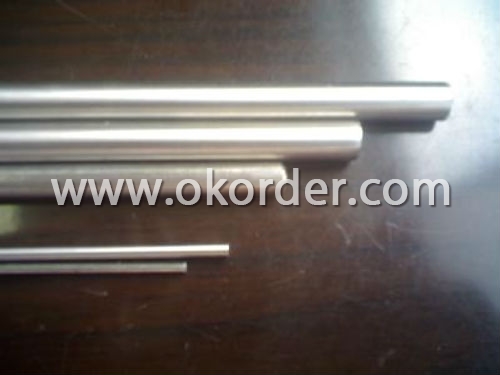
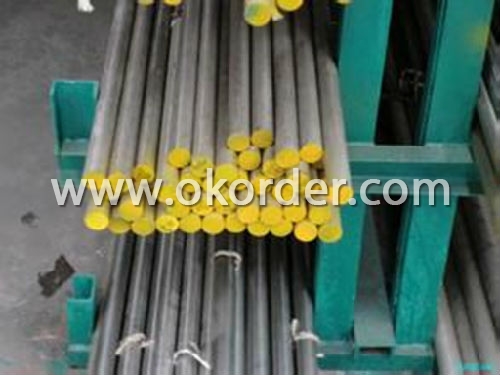
- Q: Are stainless steel bars suitable for dairy processing equipment?
- Stainless steel bars are indeed appropriate for dairy processing equipment due to their durability, corrosion resistance, and ease of cleaning. These qualities make stainless steel an ideal material for the dairy industry's equipment. Moreover, stainless steel is non-reactive, meaning it does not interact with dairy products, thereby ensuring the processed food's quality and safety. The harsh conditions of dairy processing, such as high temperatures, acidic or alkaline environments, and frequent cleaning and sanitization processes, pose no problem for stainless steel bars. Furthermore, stainless steel's smooth surface prevents the accumulation of bacteria and facilitates hygienic practices. Consequently, stainless steel bars are a reliable and suitable choice for the manufacture of dairy processing equipment.
- Q: How do stainless steel bars resist hydrochloric acid?
- Stainless steel bars resist hydrochloric acid due to the presence of a protective layer called chromium oxide on their surface. This layer acts as a barrier, preventing the acid from reaching the underlying steel and causing corrosion.
- Q: Can stainless steel bars be bent easily?
- No, stainless steel bars cannot be easily bent. Stainless steel has high strength and excellent resistance to corrosion, which makes it a popular choice for various applications. However, its high strength and hardness make it difficult to bend without specialized equipment and techniques. The process of bending stainless steel bars typically requires the use of hydraulic or mechanical presses, as well as the application of heat to soften the material. Professional expertise and experience are necessary for successfully bending stainless steel bars to achieve the desired shape.
- Q: Can stainless steel bars be used in the manufacturing of heat exchangers?
- Yes, stainless steel bars can be used in the manufacturing of heat exchangers. Stainless steel is commonly chosen for heat exchangers due to its excellent corrosion resistance, high thermal conductivity, and ability to withstand high temperatures. Stainless steel bars can be shaped, cut, and formed into the desired configurations for heat exchangers, making them a suitable material choice. Additionally, stainless steel bars offer durability and longevity, ensuring that the heat exchangers can withstand the harsh conditions of heat transfer processes without undergoing excessive wear or degradation.
- Q: What is the typical hardness of stainless steel bars?
- The typical hardness of stainless steel bars can vary depending on the specific grade and heat treatment of the material. However, most stainless steel bars have a hardness range of 20 to 40 on the Rockwell C (HRC) scale. This range indicates that stainless steel bars are generally considered to have moderate to high hardness, making them resistant to wear and deformation. It is important to note that different applications may require different hardness levels, and stainless steel bars can be customized through heat treatment processes to achieve specific hardness requirements.
- Q: Are stainless steel bars available in different lengths?
- Yes, stainless steel bars are available in different lengths.
- Q: Can stainless steel bars be used in the manufacturing of conveyor systems?
- Yes, stainless steel bars can be used in the manufacturing of conveyor systems. Stainless steel is a durable and corrosion-resistant material that is often preferred for industrial applications, including conveyor systems. Stainless steel bars can be used to construct the frame, supports, and other components of the conveyor system, providing strength and stability. Additionally, stainless steel is easy to clean and maintain, making it suitable for industries that require strict hygiene standards. Overall, stainless steel bars are a reliable and versatile choice for manufacturing conveyor systems.
- Q: How are stainless steel bars used in the aerospace industry?
- Due to their exceptional properties, stainless steel bars are widely used in the aerospace industry for various applications. Structural components are one of the primary uses of stainless steel bars in this industry. These bars are commonly employed in the construction of aircraft frames, wings, fuselage, and other critical parts. The aerospace sector requires high strength and excellent corrosion resistance, both of which stainless steel bars offer. These properties are essential for withstanding the harsh environmental conditions encountered in this industry, including extreme temperatures, pressure, and exposure to various chemicals. As a result, stainless steel bars are suitable for aerospace applications. Furthermore, stainless steel bars are utilized for manufacturing engine components such as turbine blades, exhaust systems, and fuel systems. These bars provide the necessary strength and resistance to heat and corrosion, ensuring optimal engine performance and longevity. Stainless steel bars also find application in the aerospace industry for fasteners and connectors. Bolts, screws, nuts, and other fastening components crucial for joining different parts together are produced using these bars. The high strength and corrosion resistance of stainless steel make it an ideal material for fasteners, guaranteeing the structural integrity and longevity of aircraft. Moreover, stainless steel bars are used in hydraulic and pneumatic systems in the aerospace industry. They are employed in the production of tubing and fittings, which are essential for the efficient operation of fluid and gas handling systems in aircraft. Stainless steel's resistance to corrosion and high-pressure capabilities make it a preferred material for these applications. In summary, stainless steel bars play a significant role in the aerospace industry by providing strength, corrosion resistance, and reliability for structural components, engine parts, fasteners, and fluid handling systems. Their exceptional properties contribute to the safety, performance, and durability of aircraft, making them an indispensable material in this sector.
- Q: What is the difference between hot rolled and forged stainless steel bars?
- The main difference between hot rolled and forged stainless steel bars lies in the manufacturing process and the resulting properties of the final product. Hot rolled stainless steel bars are produced by heating a billet or ingot of stainless steel to a high temperature and then rolling it into the desired shape. This process creates a more uniform grain structure and improves the mechanical properties of the steel. Hot rolled bars are typically less expensive and have a rougher surface finish compared to forged bars. On the other hand, forged stainless steel bars are produced by heating a billet or ingot of stainless steel to a high temperature and then applying intense pressure to shape the metal into the desired form. This process results in a more refined grain structure and superior mechanical properties, including increased strength, toughness, and resistance to wear and tear. Additionally, forged bars tend to have a smoother surface finish compared to hot rolled bars. In summary, the key differences between hot rolled and forged stainless steel bars are the manufacturing process, resulting grain structure, and mechanical properties. Hot rolled bars offer cost-effectiveness and a rougher surface finish, while forged bars provide superior strength, toughness, and a smoother surface finish. The choice between the two depends on the specific application and required properties of the stainless steel bars.
- Q: Can stainless steel bars be used in packaging machinery?
- Yes, stainless steel bars can be used in packaging machinery. Stainless steel is highly resistant to corrosion, durable, and has excellent mechanical properties, making it a suitable material for various components in packaging machinery such as conveyor systems, guide rails, frames, and supports. Its hygienic properties also make it ideal for use in the food and pharmaceutical industries.
1. Manufacturer Overview
| Location | Wuxi,China |
| Year Established | 2003 |
| Annual Output Value | Above US$8.3 Million |
| Main Markets | SouthEast Asia |
| Company Certifications | ISO9001:2000 |
2. Manufacturer Certificates
| a) Certification Name | |
| Range | |
| Reference | |
| Validity Period |
3. Manufacturer Capability
| a) Trade Capacity | |
| Nearest Port | Shanghai |
| Export Percentage | 30% |
| No.of Employees in Trade Department | 30 People |
| Language Spoken: | English;Chinese |
| b) Factory Information | |
| Factory Size: | Above21,000 square meters |
| No. of Production Lines | Above 7 |
| Contract Manufacturing | OEM Service Offered;Design Service Offered |
| Product Price Range | Average |
Send your message to us
Stainless Steel Bars
- Loading Port:
- Shanghai Port
- Payment Terms:
- TT or LC
- Min Order Qty:
- 10 Tons m.t.
- Supply Capability:
- 1000 Tons Per Month m.t./month
OKorder Service Pledge
OKorder Financial Service
Similar products
Hot products
Hot Searches
Related keywords



